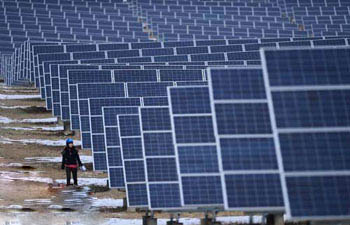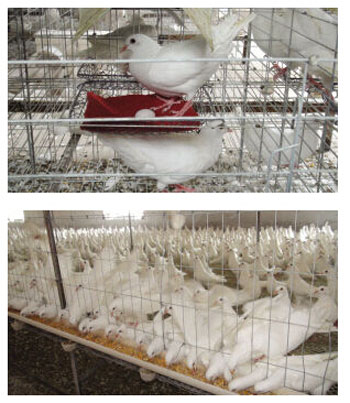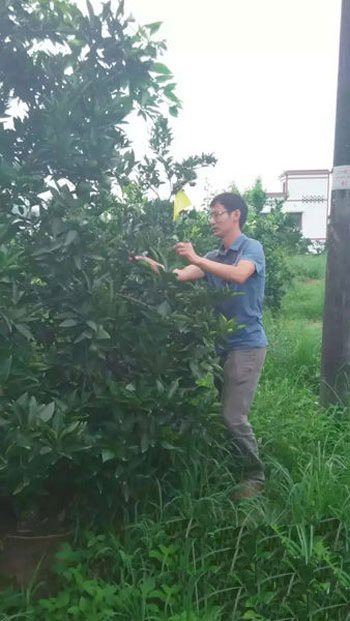It is easy to start a business by raising hairy crabs under the photovoltaic board without occupying farmland.
Original title: British media say China's photovoltaic industry has discovered a new source of money: raising hairy crabs under solar panels.

Data photo: a technician patrolled the Longyangxia water-light complementary photovoltaic power station of the Yellow River Hydropower Company.
This year, China will overtake Germany to become the country with the largest number of solar panel installations in the world, according to British media. However, as it becomes increasingly difficult for companies to obtain the huge inventory of land needed to build solar power plants, they are turning to an innovative solution: to develop a variety of farming industries, including hairy crabs, under solar panels. This helped them circumvent government restrictions on changing the use of agricultural land, won the support of local farmers and brought in additional income streams.
According to the Financial Times website on October 30, Yang Lizhi, an energy analyst at CLSA, a Hong Kong brokerage, said: "this approach is very reasonable because it can integrate solar power into agricultural land very effectively. Will not encroach on the space of agricultural production."
At the Xicun power station in Yunnan province, Hong Kong-listed company CLP has worked with local farmers to plant traditional Chinese medicine honeysuckle under solar panels, the report said. In this mountainous area, solar panels are covered with hilltops.
Ms. Yang Xinfeng, a farmer who is weeding the young plants of honeysuckle, said: "I didn't know anything about this crop in the past and it was not easy to look after it. But I make a lot of money now. " Since Ms Yang started working for the Honeysuckle contractor introduced by CLP, her income has tripled to Rmb3000 ($473a month).
CLP doubled the installed capacity of the Xicun power station to 100 megawatts, enough to power thousands of homes in the nearby city of Dali. At present, the group is building a similar project in another part of China, raising characteristic aquatic hairy crabs in ponds under solar panels.
Yang Mingcai, senior vice president of new energy at CLP China, said: "Solar power stations need to take up a lot of land, and one of the big challenges we face is how to acquire land close to major population centers. Integrating food production can help us persuade farmers to rent their land to us at reasonable prices and get support from the government. "
As the prices of solar panels plummet due to oversupply, more and more Chinese companies see an opportunity to make money while winning political points by helping the government achieve its ambitious renewable energy goals, the report said.
At the same time, more companies across China are launching photovoltaic projects combined with agriculture to develop a variety of farming industries, including mushroom cultivation, under solar cells.
As is the case in most countries, China's solar power plants are profitable only if they are subsidized by the government, the report said. However, it now takes a year or more for the new plant to obtain the necessary approvals and receive the first payment.
Despite the possibility of funding problems in the short term, China's huge investment in the solar industry will reduce costs and change the face of the global solar industry, said Yang Lizhi of CLSA. Currently, the cost of solar power is about 60% higher than that of thermal power.
Related
- A course of planting techniques and methods on how to grow carrots
- How to plant the latest tulips?
- Is it better to pick tea in the morning or in the afternoon? When is the best time for tea to be picked? what is the third or fifth tea?
- Launch Yuanxiao Happy combination Haocha + Tea Yuan healthy Taste
- Penghu Tourism "Fireworks 20 Parade with You"
- 2022 West Lake Happiness holds "Digital Revitalization Voucher" and draws iphone13 and laptop.
- Banqiao Fuzhou social houses are designed to change start-up combined with police elimination to create a safe and livable environment
- The convenient measure of "mechanical weeding" in Xinbei has been abused and the Agriculture Bureau has imposed heavy penalties on the illegal land consolidation.
- Changgeng University Joins Hands with Four Memory Factories to Rescue Memory Talent Shortage
- The list of Taiwan's top 100 MVP managers is listed by the Director-General of the Farmers' Association of Sanxia District.



